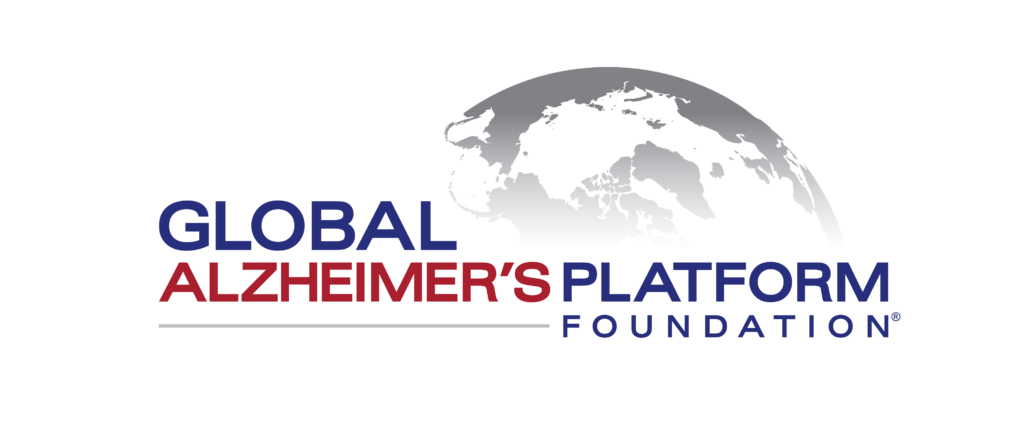Global Alzheimer’s Platform Foundation to present information about trial diversity at the Alzheimer’s Association International Conference.
WASHINGTON, DC, July 27, 2022 — As a leading organization focused on increasing participant diversity in Alzheimer’s clinical trials, the Global Alzheimer’s Platform Foundation® (GAP) will present data at the Alzheimer’s Association International Conference® 2022 (AAIC®) to share information about its work and research in the field.
The annual conference, which brings together Alzheimer’s researchers and clinicians from all over the world, will be held in San Diego July 31-Aug. 4. GAP will present research posters during two sessions, Aug. 1 and Aug. 3.
Dr. Tamiko MaGee-Rodgers, GAP associate director for Recruitment and Strategic Initiatives, will present a case study on improving access and enrollment in clinical trials for underrepresented populations.
Douglas Beauregard, GAP clinical operations director, will present new research about the Bio-Hermes biomarker study, which is the first-ever platform study to compare results of a broad array of blood plasma and digital biomarker tests compared with amyloid PET images across 1,000 participants, including more than 200 people from the African American or Hispanic communities.
“At GAP, we are dedicated to conducting Alzheimer’s clinical trials faster, with higher quality and with more diverse populations. We’re in this work to speed the discovery of Alzheimer therapies for everyone,” said GAP President John Dwyer, “and that begins by intentionally including traditionally underrepresented communities in all aspects of Alzheimer’s research.”
“As part of our innovative approach to improving the speed and quality of Alzheimer’s clinical trials, we are measuring and investigating the leading blood plasma tests, digital cognitive tests and other technologies to optimize how to recruit clinical trial participants and design AD clinical trials. This year at AAIC, we look forward to sharing our progress over the last 18 months in our Bio-Hermes biomarker study,” Dwyer said.
Research Overview
Case Study: New Site Development Program Aimed at Improving
Access and Enrollment in Clinical Trials for Underrepresented Populations
Dr. Tamiko Magee-Rodgers; poster presentation: Aug. 3
Nationwide, Hispanics and Latinos are 1.5 times more likely to develop Alzheimer’s disease than their white, non-Hispanic counterparts; and yet, they historically only make up around one percent of Alzheimer’s clinical trial participants.
By establishing a dedicated research center in Starr County’s Rio Grande City, Texas — a community that is 97 percent Hispanic and has a high prevalence of Alzheimer’s disease — GAP has worked with community partners to remove barriers for clinical trial participation.
“Starr County shows that it’s possible to build trust in diverse communities and to extend that trust to diverse clinical trial enrollment,” MaGee-Rodgers said. “A lot went into this work, and we’re excited to share it.”
Bio-Hermes: A Validation Study to Assess a Meaningful Relationship Between
Blood and Digital Biomarkers with A? PET Scans for Alzheimer’s Disease
Douglas Beauregard, research presentation: Aug. 1 (12:30 – 2:15 PT)
Through the Bio-Hermes study, GAP is developing the first-ever biomarker study that will compare the results of blood and digital biomarker tests with the results of brain amyloid PET scans and traditional cognitive tests.
The study is also notable because it requires recruitment of at least 20 percent African American or Hispanic enrollment — a rate that is four times that of the average Alzheimer’s clinical trial. The resulting data may meaningfully help scientists learn more about potential racial and ethnic differences in Alzheimer’s disease diagnostics and help ensure that the biomarkers developed for Alzheimer’s are sensitive and specific for everyone living with the disease.
Beauregard said, “For the first time, we are generating a unique, well-characterized, diverse sample set that may meaningfully help scientists learn more about potential racial and ethnic differences in Alzheimer’s disease diagnostics — and to ensure that we identify biomarkers that help everyone living with the disease, and not just a few.”
“We are grateful for the participation and engagement of the 17 GAP-Net sites that participated in this study and the more than 1,000 volunteers,” said Dwyer.
###
Contact: media@globalalzplatform.org
About GAP
The Global Alzheimer’s Platform Foundation® (GAP) is a patient-centered nonprofit organization dedicated to accelerating the delivery of innovative therapies for neurological disorders by reducing the duration and cost of clinical trials. Over 100 research centers around the world are part of the growing GAP Network (GAP-Net).
